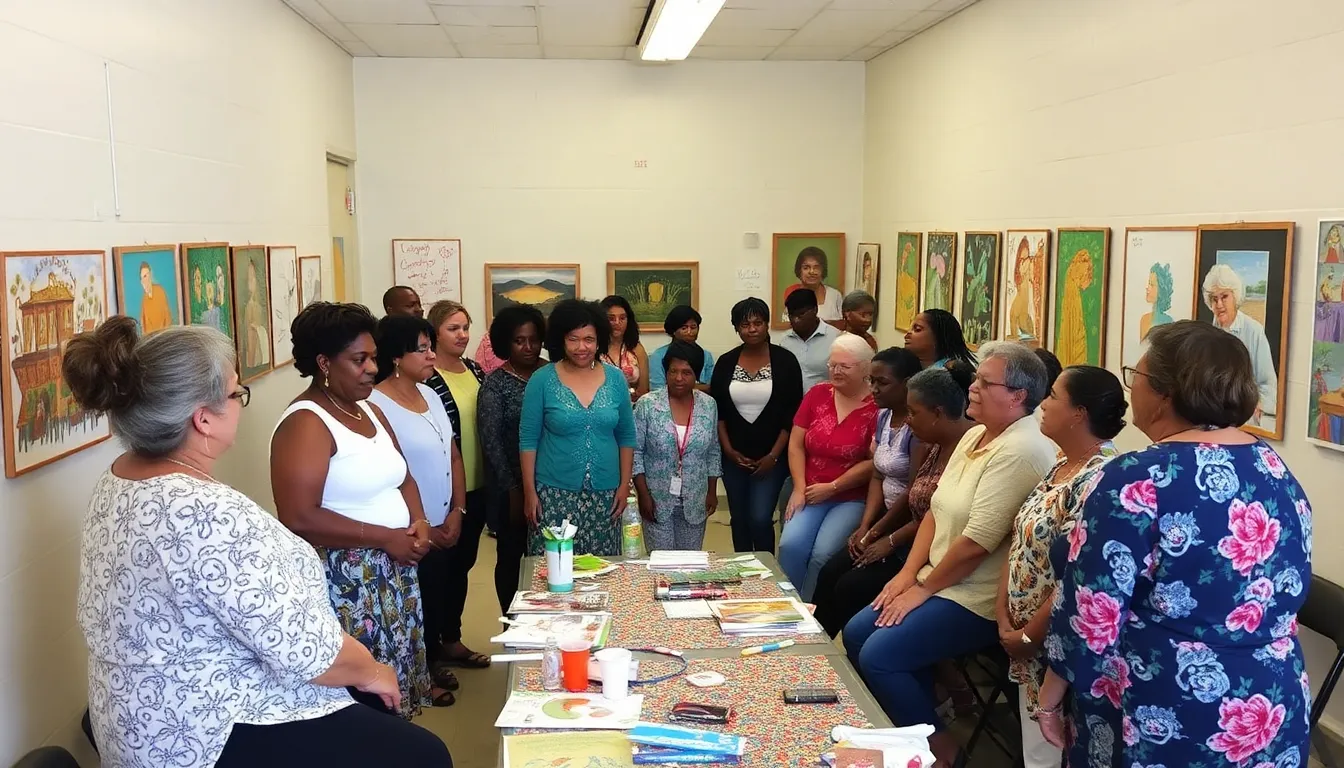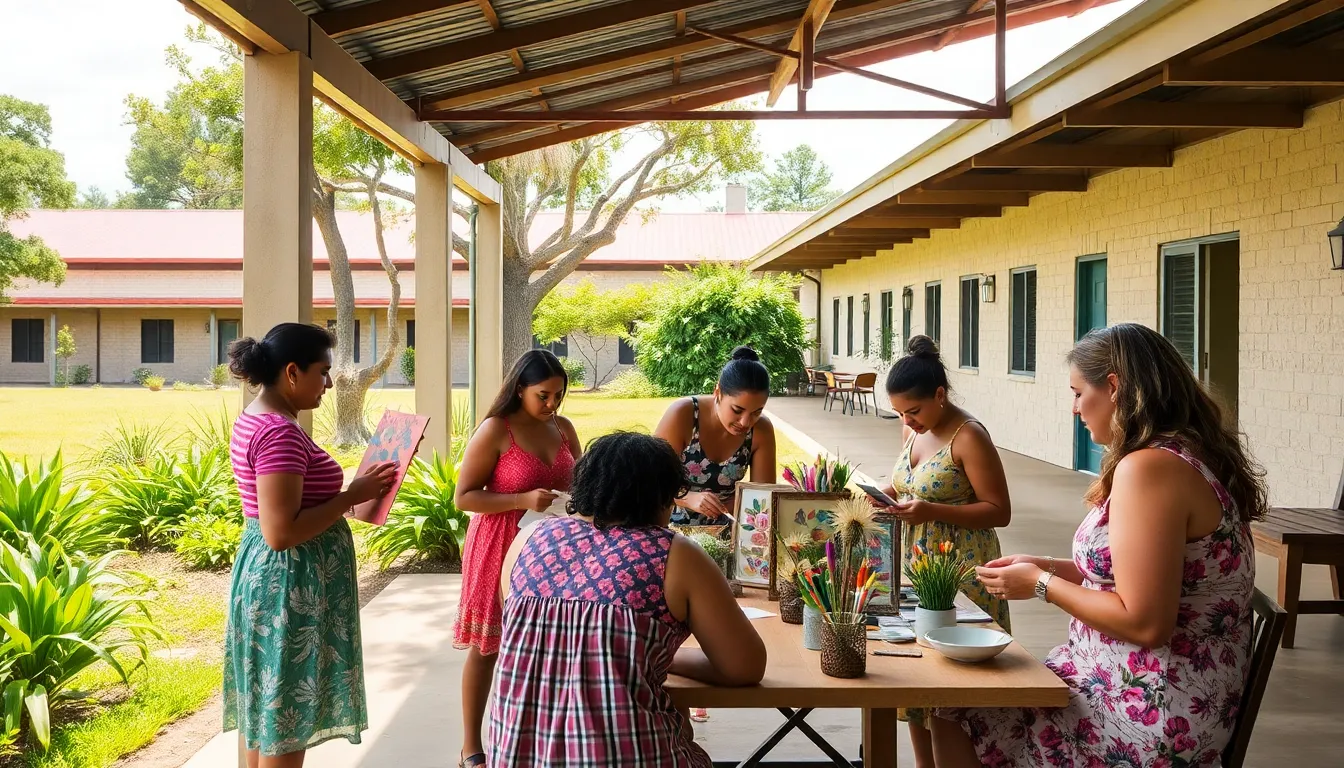Table of Contents
ToggleNestled in the picturesque landscape of Oregon, Coffee Creek Correctional Facility isn’t just another prison; it’s a unique blend of security and community. While the thought of a correctional facility might conjure images of dull gray walls and somber faces, the reality is surprisingly vibrant. The photos captured within these walls tell stories of resilience, transformation, and even a bit of humor.
Who knew that a place designed for rehabilitation could also showcase moments of camaraderie and creativity? From art projects to community events, Coffee Creek’s photos reveal a side often overlooked. So grab your virtual camera and get ready to explore the unexpected charm of this facility, where behind every barbed wire lies a story waiting to be told.
Overview of Coffee Creek Correctional Facility
Coffee Creek Correctional Facility, located in Wilsonville, Oregon, serves as the state’s primary women’s prison. This facility, established in 2001, emphasizes rehabilitation over traditional punitive measures. In addition to housing inmates, it provides various educational programs and mental health services tailored to support women’s unique needs.
Art plays a significant role within the facility. Inmates participate in numerous art projects, allowing them to express themselves creatively and reflect on their experiences. Community events enhance engagement, bridging the gap between inmates and the outside world. Photos capture these vibrant moments, showcasing the women’s artistry and spirit.
Security remains a priority, yet the design of Coffee Creek aims to foster a positive environment. The facility includes open spaces and natural light, promoting well-being while ensuring safety. Staff members focus on building rapport with inmates, fostering trust and accountability.
Community integration forms a core part of Coffee Creek’s mission. Through partnerships with local organizations, inmates engage in service projects, contributing positively to society while serving their sentences. Additional programming includes vocational training, which equips women with skills for future employment opportunities.
Overall, Coffee Creek Correctional Facility symbolizes a progressive approach to incarceration, balancing security with support. Its unique combination of art, education, and community involvement presents a distinctive model for rehabilitation. Photos of the facility highlight its commitment to transformation and resilience, providing a glimpse into a different narrative of imprisonment.
Importance of Visual Documentation


Visual documentation serves as a crucial tool for understanding the dynamic environment of the Coffee Creek Correctional Facility. By capturing photographs, it highlights the unique experiences and transformations of the women inside.
Historical Context
Visual documentation of Coffee Creek Correctional Facility dates back to its establishment in 2001. Initially, photographers focused on the facility’s design, emphasizing its open spaces and vibrant atmosphere. Historical photos convey the shift from traditional punitive incarceration to a more rehabilitative approach. Archived images showcase early community events and art projects initiated by inmates, illustrating a commitment to creativity and personal growth. These historical records reflect significant changes over time in both the facility and the women it houses.
Current Relevance
Today, visual documentation maintains its importance within Coffee Creek. Photographs from recent community events capture women’s art and engagement with local organizations. Current images show the impact of educational programs and vocational training on the inmates’ lives. This visual evidence highlights ongoing transformations and fosters a sense of connection between inmates and the outside world. By sharing photos, the facility raises awareness about rehabilitation and the importance of support systems, showcasing a model for modern incarceration practices.
Types of Photos Available
Various types of photos capture the essence of Coffee Creek Correctional Facility, highlighting its unique aspects. These images provide visual storytelling that communicates the facility’s focus on rehabilitation and community engagement.
Facility Architecture
Architectural photos showcase the facility’s design and structure. Natural light floods common areas, creating a warm and inviting atmosphere. Open spaces encourage interaction among inmates and staff. Each building reflects a commitment to security while promoting a sense of community. Images depict the balance between functionality and aesthetics, illustrating Coffee Creek’s role as a progressive correctional institution.
Daily Life Inside the Facility
Photos taken during daily life offer insight into the routines and activities of inmates. In these images, inmates participate in educational programs, engage in art projects, and attend community events. Each photograph tells a story of resilience and transformation. Captured moments depict collaboration and support, illustrating the positive impact of rehabilitation-focused initiatives. Life inside Coffee Creek reflects an environment of growth and empowerment.
Ethical Considerations in Photography
Photography within the Coffee Creek Correctional Facility presents various ethical dilemmas, particularly concerning privacy and the impact on inmates and their families.
Privacy Concerns
Privacy issues arise when capturing images of individuals in a correctional setting. Consent is crucial; obtaining permission from inmates ensures their autonomy and respect. Without informed consent, photographs may exploit individuals’ vulnerabilities. Photographers must remain mindful of this ethical obligation, safeguarding the dignity of those portrayed. Capturing candid moments can enhance storytelling but poses challenges regarding personal boundaries and the potential for negative exposure. Protecting the identities of inmates through anonymity in images remains a priority, as this fosters trust and encourages authenticity in visual documentation.
Impact on Inmates and Their Families
Photography serves as a tool for connection between inmates and their families. Positive imagery can help humanize inmates, facilitating understanding and empathy. However, sharing photos widely without consent could hurt family relationships or perpetuate stigma. Inmates often experience difficult emotions regarding their past and present, so sensitive representation is paramount. Positive images depicting rehabilitation and community involvement can uplift spirits and foster hope. Each photo’s portrayal matters, as it connects families to their loved ones, illustrating growth and transformation during incarceration. Recognizing this impact helps frame the narrative surrounding incarceration, highlighting progress over punishment.







